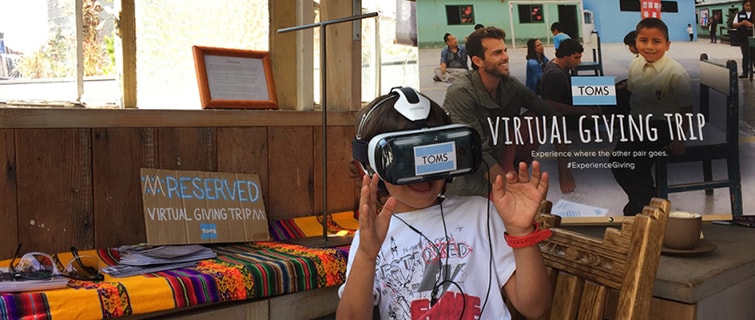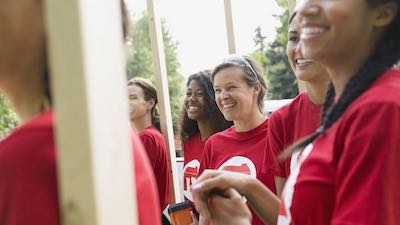
This interview has been edited for clarity and length.
Georgetown’s Certificate in Social Impact Storytelling teaches changemakers of all types how to harness the power of effective storytelling for the strategic benefit of an organization and society as a whole. As part of this online program, students learn directly from expert storytellers. I recently interviewed one of those experts, Jordan Glassberg, vice president of business development at TOMS Shoes, to learn more about how this socially responsible brand is using virtual reality (VR) to tell stories about its giving sites around the world. In addition to good storytelling, the company is working to drive deeper emotional connections with consumers through the usage of VR in the Experience the TOMS Virtual Giving Trip story.
Georgetown: Where did the idea of using virtual reality at TOMS Shoes start?
Jordan Glassberg: One of the perks of being a TOMS employee is that on your three-year work anniversary you are able to go on a giving trip. You actually get to experience our company’s giving somewhere around the world firsthand. It’s such an enriching, impactful, and powerful experience to see things like the children we help and the volunteers working with us in the field.
We started to think about how we could share that exact same feeling with our customers. We thought, could we share that experience with our customers and take it to scale in some way? How could we take the world on a giving trip? We didn’t want to just show somebody a static picture.
So when we saw virtual reality we said, wow! People are curious about why and how we actually give shoes. Virtual reality is a super immersive form of storytelling that allows the consumer to really see our work in an entirely new way. This technology is the closest thing to being there on-site and became the most immersive and powerful way for us to showcase what we do. We created the “Experience a TOMS Giving Trip” story about our work in Peru and brought it within stores. We set up special VR areas and trained store associates in how to assist customers to use the technology. For TOMS, this form of storytelling has become super powerful because it helps consumers experience and then articulate why this brand does what it does.
Georgetown: How do you define success with this type of storytelling for a socially responsible brand like TOMS? What does success look like?
Glassberg: We recently did a study to help us understand more about customers’ levels of affinity with our brand. What we found is that it’s important to tell our brand story and mission together with the products. As we become a bigger brand, it was interesting that the research showed that people were increasingly seeing our products as fashion items and not necessarily knowing our story or our focus on giving. Internally, we thought: “Oh my gosh, how do people not know this about TOMS?”
One of the key reasons, then, behind our experimentation in VR was to showcase the duality of the story of the company’s mission along with a great product. We have seen an increase in giving and mission awareness as people watch this story. Of course, we are also interested in the trend lines of selling product, so the two goals must work together.
We believe VR storytelling is super powerful, and at our core we are a storytelling brand. Going forward we plan to continue to invest in VR storytelling and the measurement of it.
Georgetown: What else are you and your colleagues thinking about related to the future of storytelling, especially as it relates to a socially responsible brand like yours?
Glassberg: What we are especially thinking about going forward is how to ensure storytelling is meeting the transparency expectations of consumers as it relates to social impact work. I think it’s increasingly important to use storytelling to get our consumers to really feel what we are doing and the actual impact it is having.
We are not just giving shoes. Talking about TOMS’ sustainable impact through stories is going to continue to be important and evolve, and I think VR is a very interesting medium in which to do that. Especially as it become more ubiquitous, creating episodic stories to which people are coming back and checking in with you is something to think about employing. Any way to continue to get your community and tribe to feel through stories is the name of the game.

